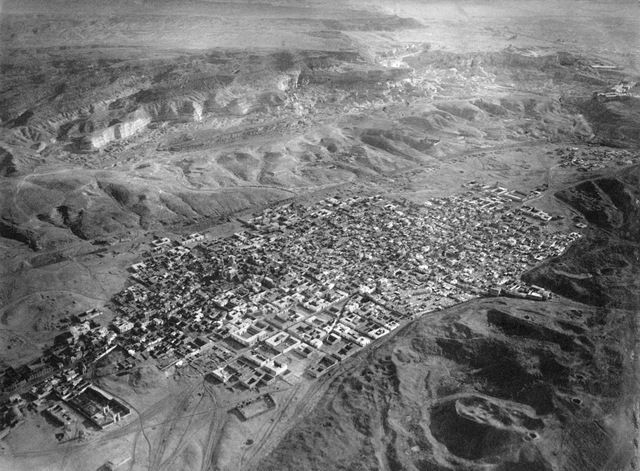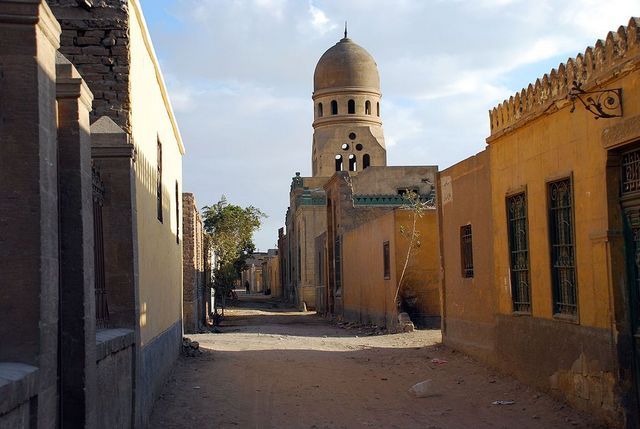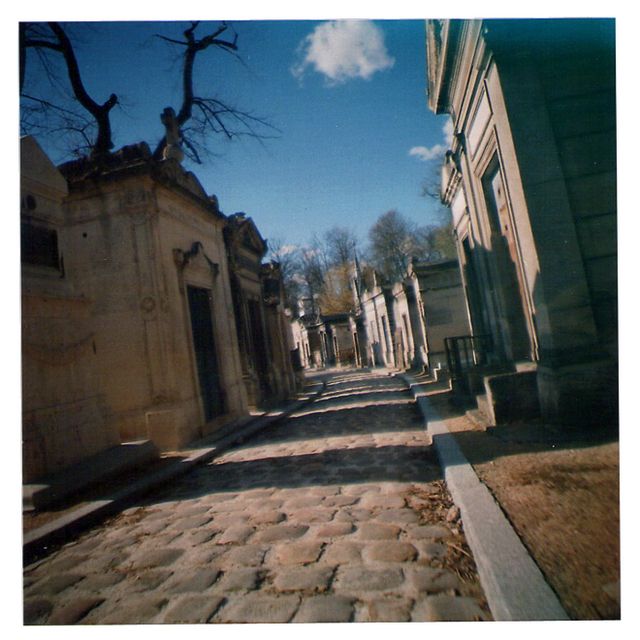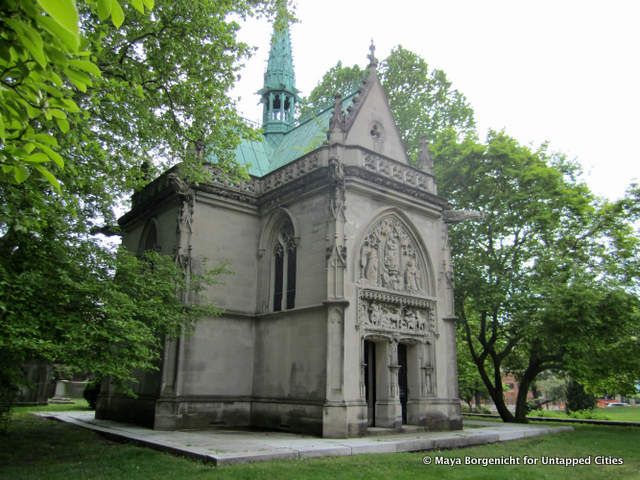Last Chance to Catch NYC's Holiday Notalgia Train
We met the voices of the NYC subway on our nostalgia ride this weekend!


Conspicuous wealth isn’t limited to life on earth, it seems. There are many amazing examples of architectural masterpieces built for the afterlife. While much of the focus is often on the tributes to single individuals–Lenin, Sun Yat Sen–or creepy crypts full of skulls and bones, we’d like to highlight the cemetery cities we’ve been coming across recently. From a distance, some of these may look simply like a suburban residential neighborhood. Look closer, and you’ll realize they’re cities of the dead.
In the capital of Sinaloa, an area dominated by drug cartels, the Jardin del Humaya Cemetery is a prized destination in death. An aspiring resident says in the documentary Narco Cultura, “Out of every thousand f-ers, only one gets here.” And once they are here, they live in death as they did in life, in suburban-looking houses with bullet proof glass, air conditioning and spot lighting, just to name some of the comforts. Some request to be buried with their souped up pick-up trucks.
A whole industry of construction and maintenance has sprung up to keep up with the every increasing rate of new burials from the drug war, and like in life, the battle for the more sumptuous house just keeps getting more competitive. Scattered in the midst however, are the tombs of lower ranking cartel members, who sometimes get next to no decoration–but are happy just to be included in this exclusive cemetery.

City of the Dead in 1904. Image in Public Domain by Eduard Spelterini
The City of the Dead on the border of Cairo, Egypt, was built as a cemetery starting in 642 A.D., but is now also home to anywhere between 50,000 to a million people that are still living. Economic factors have contributed to the increase in population, particularly after the Egyptian Revolution in 2011. Functionally, it’s just like any other suburb with power lines and a post office but conveniently the upkeep of the mausoleums provide both income and housing.

Image via Wikimedia Commons by Bertramz

The architectural style of Recoleta cemetery in Buenos Aires is a mix of Gothic chapels, Greek temples, fairytale grottoes and elegant little houses. Street lamps mark the stone “streets” of this cemetery city of over 6,400 tombs. See 10 of the must-visit tombs in Recoleta.

Image via Wikimedia Commons
Outside the village of Dargavs in North Ossetia is what appears to be a mountainside stone mortar village. In reality, it’s a collection of 99 tombs and crypts, dating from the 12th century on. Though picturesque, it’s notoriously difficult to access, taking three hours from Vladikavkaz on a long and narrow tough road.

Photo by Charles Irby for Untapped Cities
Père Lachaise is the final resting places for over 300,000 and is the largest cemetery in Paris. The famous include Balzac, Chopin, Colette, Molière, Jim Morrison, Édith Piaf, Camille Pissarro, Gertrude Stein, Marcel Proust, and Oscar Wilde. But when it first created in 1804, it wasn’t immediately a success. Parisians were wary of being buried in a new cemetery, especially one not consecrated by the church. In order to remedy this situation, the cemetery managed to secure the remains of La Fontaine and Molière and transferred them to the cemetery in 1804. Another public relations move occurred in 1817, when the remains of Pierre Abélard and the nun Héloïse d’Argenteuil were also transferred to the cemetery.

Opened in 1863, Woodlawn Cemetery is comprised of over 400 acres of rolling hills, circular paths and mausoleums meant to evoke miniature gothic cathedrals, Grecian temples and Egyptian tombs (one was once complete with reeds, water and sand – it was later removed). New York’s wealthiest citizens built these mausoleums with style and grandeur that matched the 5th Avenue mansions they spent their living years in. Above is the Belmont Mausoleum for Ava Vanderbilt Belmont, and built by the architecture firm Hunt & Hunt, whom Alva had commissioned to build a number of her grand mansions.
This article also written in part by Benjamin Waldman, Emily Baillie, and Maya Borgenicht.
Subscribe to our newsletter